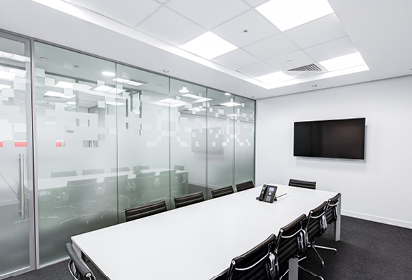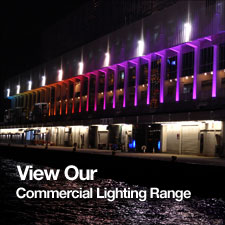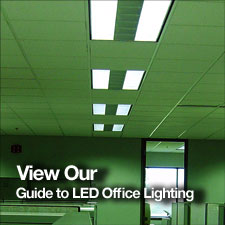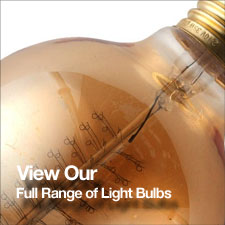When installing school lighting there are many factors to consider. The wellbeing and performance of students and staff are primary concerns, and numerous aspects of lighting are influential in this. Natural window light is encouraged in schools, which has long been known to positively affect mood, energy and concentration.
Colour temperature in artificial lighting has an important role to play, too. A cool white light source makes students more focused and generally improves performance, whilst a warmer light may be useful when engaging young children in calmer activities.
Specific levels of light, or illuminance (measured in lux on the plane surface) are also recommended, usually in accordance with British and European Standard 12464-1 (Lighting of Indoor Work Places). Here are some of the recommended lux levels applicable to schools, listed by application:
- Corridors: 100 lux
- Foyers, entrance halls, canteens: 200 lux
- Libraries, sports halls, gymnasiums, lecture theatres, classrooms, computer rooms: 300 lux
- Laboratories, kitchens: 500 lux
- Technical drawing room: 750 lux
Standards and regulations
Aside from the above-mentioned British and European Standard 12464-1, regulations relating to school lighting include the following:
- Education (School Premises) (England) Regulations 2012: Regulation 8
- The Education (Independent School Standards) (England) Regulations 2010: Regulation 23E
- The Workplace (Health, Safety and Welfare) Regulations 1992: Regulation 8
Lighting requirements: area by area
Lighting requirements in schools, colleges and universities are diverse. Let’s look at some of the key objectives to consider when lighting specific areas of an education premises:
Entrance halls
Areas of transition between outdoors and indoors are potentially hazardous. It takes time for our eyes to adjust to different strengths of light. For this reason, entrance halls are required to be brighter than corridors.
The Perform LED Batten produces a powerful output of light and boast a phenomenal 40,000 hour lifespan and use significantly less energy than T8 or T12 fluorescent tubes.
Corridors and staircases
The main objective here is safe flow of traffic, bearing in mind that corridors and staircases will also be part of an emergency escape route. The Integral 12W Cool White LED Emergency Slimline Flush Light with Microwave Sensor detects movement using a microwave sensor, which can see through lighting enclosures as well as glass-windowed doors.

The Integrel Flush Light can be used at the ends of corridors, and wired to trigger several lights in a slave circuit when a corridor is approached. As an emergency light, it also provides up to three hours of battery backup operation during a power failure.
For escape route purposes there’s the Eterna LED Emergency Bulkhead. This comes with a customisable legend set and can be used in corridors, stairwells, and even on the exterior of a building thanks to its IP65-rated dust and water protection.
Classrooms
Classrooms require a uniform distribution of light, avoiding harsh shadows or excessive modelling. An illuminance of 300 lux is suitable for general tasks among younger students, whilst a higher 500 lux measurement is ideal for detail activities or for older students in adult education classes.

An LED Light Panel is an extremely clean, flush-fitting installation that will not harbour dust, dead bugs or bacteria. Unlike recessed fluorescent fittings, an LED panel does not lose any of its light in an elaborate system of louvres and reflectors. It is naturally directional, which makes for extremely efficient light output (light fitting efficiency is measured as LOR, or Light Output Ratio).
Laboratories
Laboratory lighting has to be robust, IP-rated for resistance to chemical splashes, and needs to deliver a smooth, glare-free light. Lyco offers both IP44 and IP65 rated LED Panels.
Dining areas
Dining areas need to be relatively well lit, with brighter lighting than adjacent circulation areas. Choice of lighting will depend on structure, available window light, and ceiling height. Large pendants are sometimes used in dining halls, whilst recessed LED downlights or panels provide a tidy solution for lower-ceilinged modern canteens.
For professional lighting applications, the Luceco Eco 5W Dimmable Warm White LED Fire Rated Downlight offers great value for money. This 50W equivalent warm white LED fire-rated downlight is certified with an IP65 rating, making it ideal for bathroom and washrooms, including above a shower. It complies with the latest regulations being fire resistant, and is supplied with a 3 year guarantee.
Outdoor areas
Outside an educational facility, safe orientation must be enabled at all times. This includes clear visibility around pathways and entrances, and in adjoining school areas such as playgrounds, bike sheds and car parks.

A weatherproof floodlight with built in PIR sensor is perfect for these purposes. The PIR sensor triggers light when movement is detected.In a lot of fittings PIR sensor can be overridden if required for continuous illumination. These fittings also make an effective security light, acting as a deterrent to intruders with its bright output of cool white light.
Converting to LED
Lighting usually accounts for at least 25-30% of a school’s energy bills, so it’s little wonder that many are looking for more energy-efficient solutions. Lighting schemes that are 10-20 years old are greatly outmoded in terms of economy and performance.
By replacing an old fluorescent system with modern LED lighting, up to 60-70% savings can be made on energy bills. LED is up to 90% more energy efficient than incandescent light sources. Maintenance costs are also slashed, and interruption to classes through lamp-changing virtually eliminated.
An LED conversion will reduce your school’s carbon footprint and save substantially on energy bills. Initial investment is invariably returned within a few months.
Lyco has helped some of the UK’s largest companies switch to LED lighting and can help you upgrade in many ways, from offering a no-obligation free survey through to full installation and ongoing support. To find out how your school lighting can be transformed, contact Lyco today!
For more advice, inspiration and news take a look at our Lighting Advice section.
Andrew Evangelidis Head of Buying
Andrew is an experienced buying professional who takes an entrepreneurial approach to identify new lighting solutions and ensure Lyco have first-to-market ranges for our customers. Having previously worked for well known brands such as Wickes, Carphone Warehouse and Toys R Us, Andrew has now turned his hand to sourcing commercial lighting and ensure our customers receive top brand quality products at marketing leading prices. He manages a team of commercial and decorative buyers who travel the world finding new products that our customers don’t even know they need yet.



















